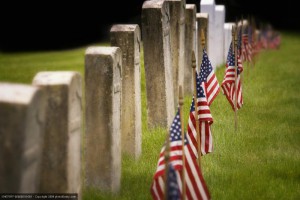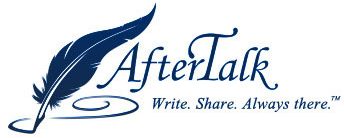The Seesaw of Resilience and Vulnerability
It’s this back-and-forth of grief that provides momentum for the journey.
Editor’s Note: this article originally appeared in TAPS Magazine. TAPS Magazine is dedicated to America’s fallen heroes and their surviving families and friends. This explains the military references. For more on TAPS, see below.
By Alan Wolfelt, Ph.D.
“To share your weakness is to make yourself vulnerable; to make yourself vulnerable is to show your strength.”—Criss Jami
As you journey through your naturally complicated and painful grief, you are probably being buoyed by—and perhaps also dismayed by—your resilience. After all, here you are. You may not have thought it possible at first, but you have indeed survived.
Military families are trained to be resilient. After all, military service is unpredictable. You may have had to pick up and move several times in the past, forcing you to leave old friends and make new ones and reestablish community connections. Deployments are also unpredictable, and before the death you may have been separated from your loved one for long stretches of time. Through all this, and because of the military’s resilience-focused culture, military families typically learn to keep putting one foot in front of the other.
separated from your loved one for long stretches of time. Through all this, and because of the military’s resilience-focused culture, military families typically learn to keep putting one foot in front of the other.
It’s true that your resilience training may have helped you and your family in your grief. The most profound change you could ever experience has happened, and now, as always, you’ve picked yourself up, dusted yourself off, and kept putting one foot in front of the other. Perhaps your resilience helped you with practical matters such as relocating.
You may have felt dismay sometimes at your own resilience, too. Maybe the fact that life goes on has made you feel distressed or anxious now and then.
Pay attention to those inklings of distress. When it comes to grief, it’s wise to beware of your learned resilience. Why? Because it may tell you to “suck it up,” “let go,” and put your loss behind you. It may suggest that you need to be strong and in control. Yet what all grievers actually need is to embrace their normal and necessary thoughts and feelings and give them the time and attention they deserve. What grievers need to do is relinquish control of their grief.
Allowing yourself to be vulnerable is just as important as cultivating resilience. Think of them as the two sides of a seesaw. You want the seesaw to balance sometimes, yes, but you also want it to go up and down. On some days you will need to open yourself to your naturally painful grief. The vulnerable side of the seesaw will tilt down. On other days you will marshal your resilience to help you navigate new challenges and approach life openly as it moves toward you. The resilient side of the seesaw will tilt down.
Both vulnerability and resilience are required for you to mourn. Mourning is the work of grief. Mourning is talking about your grief and the person who died. It’s crying. It’s participating in a support group. It’s journaling. It’s volunteering and walking alongside other grievers. It’s actively participating in whatever means of expression feel right to you in the moment and suit you best. It is through mourning that you will continue to heal and find renewed meaning in life and living.
Mourning requires you to be vulnerable to your deepest pain and your most challenging thoughts and feelings. It asks you to encounter them fully and express whatever they bring up for you. It asks you not to suppress or deny or distract, but instead, immerse. This immersion is necessary because it is the truth.
But here comes resilience! And resilience asks you to dose yourself with your grief and mourning. well as vulnerability and resilience do. When It says, “Yes, encounter your necessary grief for a while, then let’s go engage in life for a while. We’ll keep going like that back and forth, back and forth.”
It’s this back-and-forth of grief, in fact, that provides momentum for the journey. I call it “evade-encounter.” Your loss always lives inside you, But it’s healthy to take part in non-grief activities part of the time. It’s healthy to evade your grief sometimes. It’s also healthy and necessary to return to encounter your grief sometimes.
 Earlier I asked you to picture a seesaw representing resilience and vulnerability. Now I want you to imagine one of those old-fashioned handcars that railroad workers used in the 17th and 18th centuries to traverse train tracks. Two people would stand on either side of the handcar’s small platform and by taking turns pumping the seesaw-like lever back and forth, they could quickly convey themselves down the track with their own muscle power.
Earlier I asked you to picture a seesaw representing resilience and vulnerability. Now I want you to imagine one of those old-fashioned handcars that railroad workers used in the 17th and 18th centuries to traverse train tracks. Two people would stand on either side of the handcar’s small platform and by taking turns pumping the seesaw-like lever back and forth, they could quickly convey themselves down the track with their own muscle power.
The handcar metaphor captures the reciprocating power of evade-encounter as well as vulnerability and resilience do. When you consciously activate and rely on both as you journey through grief, and you work to keep them in in healthy balance, you create divine momentum toward healing. If, however, you neglect one side or the other, you get stuck and go nowhere.
The Wikipedia entry on handcars says, “While depictions on TV and in movies might suggest that being a member of a handcar was a joyride, in fact pumping a traditional handcar… could be very hard work.” Likewise the back-and-forth of resilience and vulnerability in grief is very hard work. Remind yourself that there are no rewards for speed. If your handcar moves at a snail’s pace, so be it. If it goes backward sometimes, so be it. As long as it’s moving, you’re on the right track.
And don’t forget to take good care of yourself every day You won’t have the energy to muster the the back and forth of vulnerability and resilience if you’re not getting ample rest, nutrition, hydration, exercise, and health care. You will also need help pumping the handcar sometimes. Healing in grief is not a solo activity. Vulnerability and resilience in grief require seeking out and accepting the support of friends, family members, neighbors, and others along the way.
I’ve been a grief counselor for four decades now, and I’ve been privileged to bear witness to the power and momentum created by vulnerability and resilience hundreds of times. So I wish you vulnerability and resilience both. Godspeed.
TAPS Magazine is dedicated to America’s fallen heroes and their surviving families and friends.
This quarterly magazine is sent free of charge to anyone interested in receiving it, including survivors, service members, supporters, and grief professionals. Subscribe to the TAPS Magazine.
CLICK HERE TO JOIN AFTERTALK
Free, Non-Profit and Non-denominational
Every Wednesday we will be publishing Pandemic Weekly for, we hope, not too long. We invite you to submit your thoughts, essays, poems or songs. Please send to info@aftertalk.com. To see past Pandemic Weeklies, CLICK HERE

